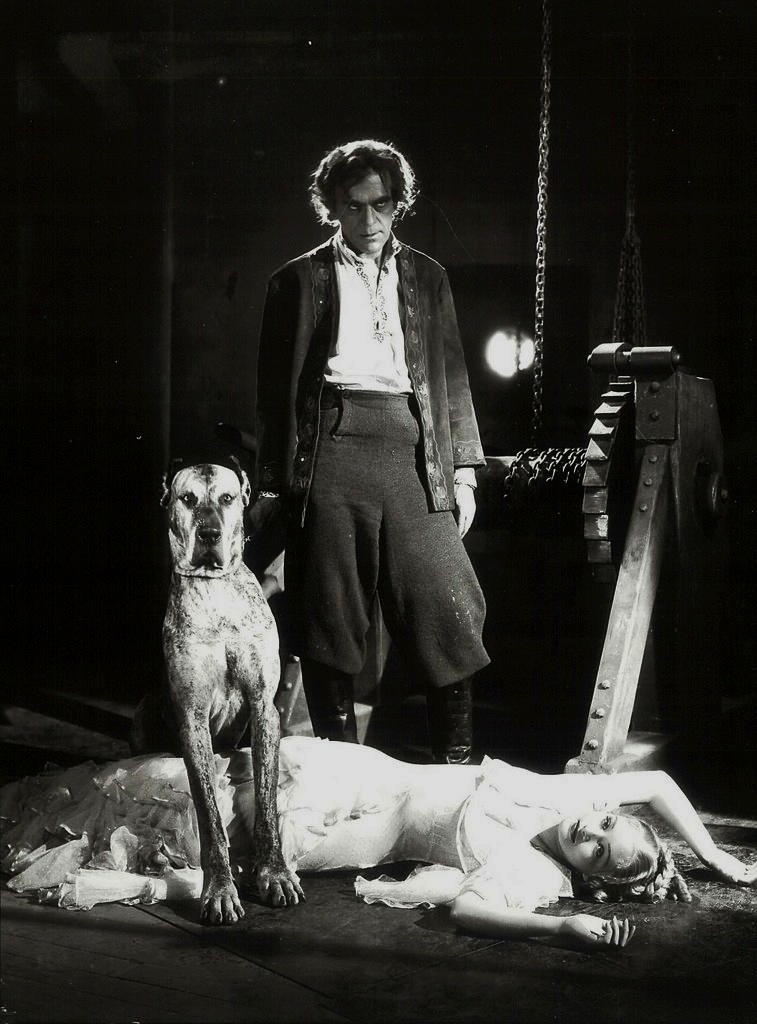 The first period of classic horror films (1931-1935) is rightly dominated, in popular memory and in sheer evergreen salability, by Universal Pictures. Boy wizard producer Carl Laemmle, Jr. was the first to realize the raw potential of a genre previously and unproductively tethered to stage conventions. Innumerable silent horrors look amazing in stills but prove leaden on the screen, encumbered by the belief that every one-part terror has to be balanced by three-parts comedy relief. The sobriety of the early talkie terrors—not only no comedy, but often, too, no music and a halting slowness that presupposes a distinctive kind of viewer engagement—remains notable today. More than any other films of the period, these productions express the moguls’ instinctive anxieties about the Old Country: famine, disease, monsters, indecipherable lumpen accents, peasants always on the verge of some stupid revolt.
The first period of classic horror films (1931-1935) is rightly dominated, in popular memory and in sheer evergreen salability, by Universal Pictures. Boy wizard producer Carl Laemmle, Jr. was the first to realize the raw potential of a genre previously and unproductively tethered to stage conventions. Innumerable silent horrors look amazing in stills but prove leaden on the screen, encumbered by the belief that every one-part terror has to be balanced by three-parts comedy relief. The sobriety of the early talkie terrors—not only no comedy, but often, too, no music and a halting slowness that presupposes a distinctive kind of viewer engagement—remains notable today. More than any other films of the period, these productions express the moguls’ instinctive anxieties about the Old Country: famine, disease, monsters, indecipherable lumpen accents, peasants always on the verge of some stupid revolt.
The other studios tried to turn out rival scare pictures and their approaches certainly typified their production sensibilities. Paramount turned out highly polished—and less immediately affecting—efforts like Dr. Jekyll and Mr. Hyde and Murders in the Zoo. RKO’s The Most Dangerous Game is only intermittently engaged, but desperate and dreamlike at its best. Warners re-titled its Trilby adaptation after the more dynamic Svengali and made him a pitiable grand-standing striver much at home in the Burbank rogue’s gallery; the same studio’s Doctor X is a (very amusing) newspaper picture with bio-terror trimmings. Small-town-oriented Fox didn’t even try and M-G-M probably wished it hadn’t either after Freaks.
Harry Cohn’s Columbia, superficially the studio positioned closest to Universal with respect to capital and assets, finally released a horror picture at the very end of the cycle. Early production notices announced a property called The Black Room Mystery—but mysteries are something read by mostly respectable men and women in mostly respectable circumstances. This was no S.S. Van Dine. Studios pegged horror entries for the subliterate masses, the American equivalent of those torch-bearing villagers across the Atlantic.
